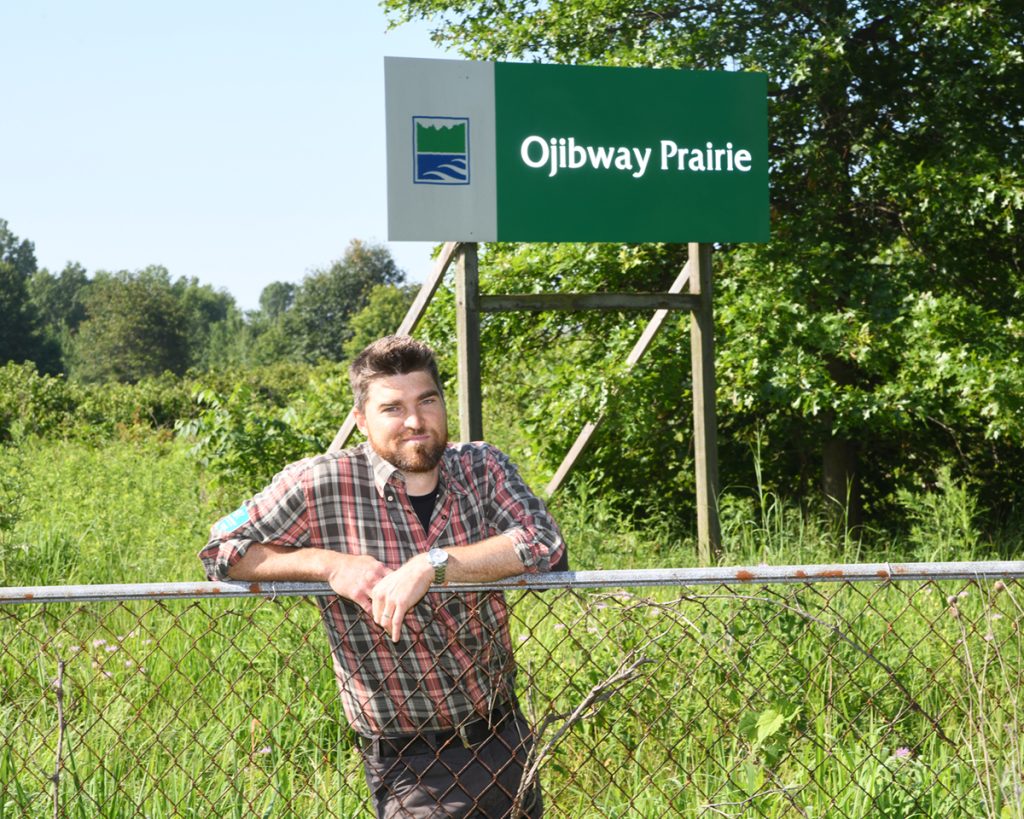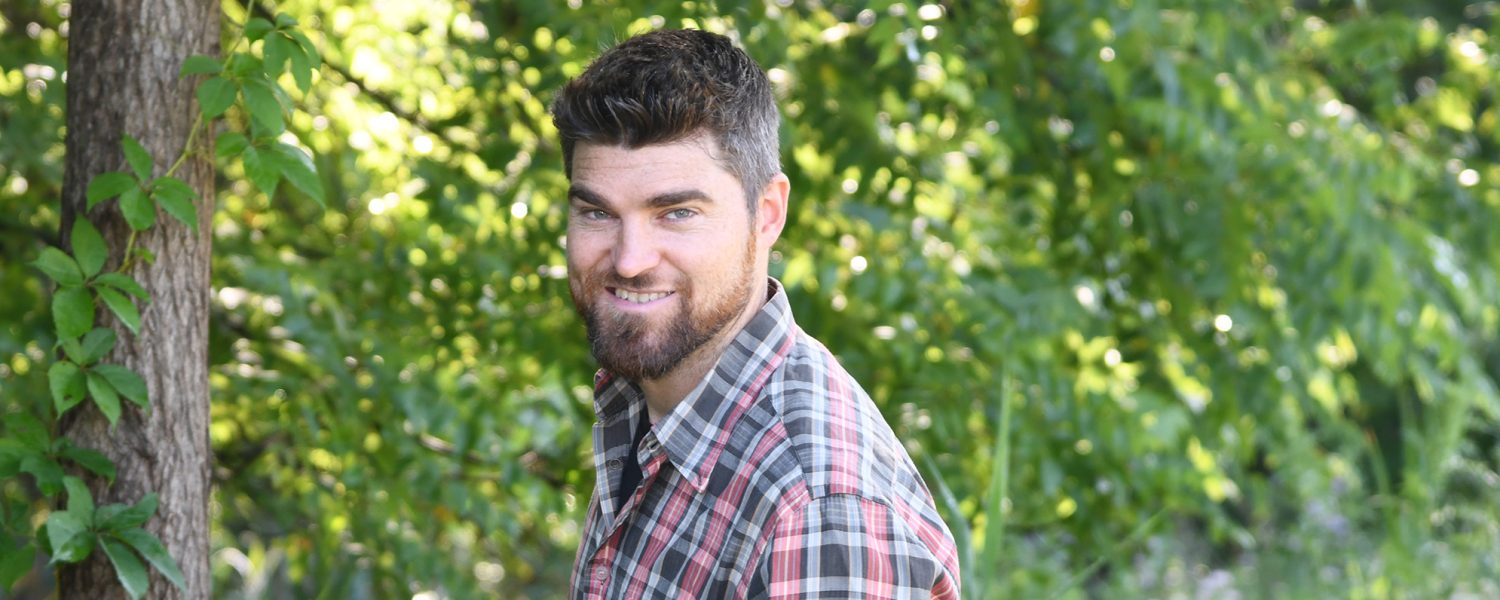Meet The People Working To Save
Windsor’s Rattlesnake Population
Story by Leah Gerber
Photography by John Liviero
The last time Jonathan Choquette saw a rattlesnake in the Ojibway Prairie was in 2019. Choquette is the lead biologist for the Ojibway Prairie Reptile Recovery project with Wildlife Preservation Canada. At the time, he and his team performed regular surveys between LaSalle and Windsor to estimate the number of rattlesnakes in the area.
“In 2019 it was kind of a shock because we only found one Massasauga in that year. And this is putting in hundreds of person-hours of effort,” he said. “That really was the trigger for us to say these snakes aren’t hanging on that much longer.”
Choquette realized the remaining animals needed to be collected and brought to a captive breeding facility for any chance of the population’s survival, but he needed permission from the provincial government to collect a protected species.
“We were geared up for collecting the last individuals in 2020, and unfortunately we weren’t able to find any,” he said. “Same thing happened in 2021.”
Though small numbers of the snakes could still be living in areas he hasn’t surveyed, Choquette has reluctantly concluded the Ojibway Prairie population of eastern Massasauga rattlesnakes is likely extinct.
Wildlife Preservation Canada is an organization working to help the country’s species at the most immediate risk of extinction. It’s one organization among many working to advance the research and practice of captive breeding and releasing the eastern Massasauga rattlesnake to augment their natural numbers.
Choquette is from the Windsor area; he grew up in LaSalle and later Tecumseh. In high school he found a Blanding’s turtle, which looks striking with its banana-yellow throat and army-helmet shell. It made him wonder about other intriguing native species nearby, and this led him to the Massasaugas.
“I thought, “Wow, there’s rattlesnakes (near) my home city?’” he said. “I was quite amazed that we have rattlesnakes here. I just became obsessed.”
In Canada, these rattlesnakes are only found on the Bruce Peninsula, the eastern shore of Georgian Bay, the Wainfleet Bog on the Niagara Peninsula and the Ojibway Prairie. They typically grow between 50 and 70 centimeters, and have a triangular head, blunt tail with a rattle, vertical pupils and hollow fangs used to inject venom into prey.
“Rattlesnakes really only evolved here in North America,” says Choquette. They are much cooler under pressure than other snakes and prefer to hide. “The last thing they want is to bite you because it’s kind of a waste for them. Their venom is for food,” he said.
However, Choquette recognizes people can have real fear of these animals. “They ask, ‘Why? Why conserve something that could potentially cause harm?’ You can’t really gloss over this,” he says.
Choquette estimates about one rattlesnake bite is reported per decade in the Windsor area. Across Ontario, reports of snake bites range between two to about 14 incidents each year, though five is more typical. The last known fatal snakebite in Ontario was in 1962. Across the country, researchers estimate about 100 snake bites each year, with zero fatalities recorded due to readily available anti-venom.

“Most people are taking a bigger risk looking at their cell phone while they drive,” Choquette says. This risk is further reduced with proven methods to minimize human-snake interactions like the rattlesnake-proof fencing used widely in Arizona. If people are mindful about staying on trails and wearing appropriate clothing when moving through known rattlesnake habitat, then again, the risk of a bad encounter is also greatly reduced. Windsor is in the heart of the Carolinian zone, a biodiversity capital of Canada, says Choquette. “And with that comes rattlesnakes.”
Eastern Massasauga rattlesnakes have been in the Windsor LaSalle area for thousands of years since glaciation, says Choquette. Habitat loss and fragmentation, persistent death on roads and people targeting them out of fear have all led to their decline.
Choquette identified and brought together key stakeholders who own or manage land in the approximate 410 hectares of critical habitat, including Ontario Parks, the City of Windsor, the town of LaSalle and the Essex-Region Conservation Authority, among others. Together, they work to enhance and connect habitat, install barriers to reduce the number of snakes being killed on roads and the possibility of snake-human encounters in residential areas.
Ontario Parks has managed the Ojibway Prairie Provincial Park, part of the larger system of natural areas and corridors between LaSalle and Windsor called the Ojibway Prairie Complex, since 1977. It’s one of the largest remnants of tallgrass prairie and oak savanna habitat left in Canada. Staff perform prescribed burns to mimic the naturally occurring fires that once regulated this ecosystem.
The Toronto Zoo is another major partner. Under approval from the Ministry of Natural Resources, the Association of Zoos and Aquariums gave the eastern Massasauga rattlesnake Species Survival Plan status. This means participating accredited facilities work together to breed and manage captive populations for genetic diversity and to increase their numbers.
Rick Vos is the lead keeper of amphibians and reptiles at the Toronto Zoo. His goal, with the help of partner organizations, is to grow and house healthy snakes. If Vos is successful, the zoo will eventually provide snakes for release to support and grow Ontario’s native populations.
This year he saw some success. “The Toronto Zoo was able to produce over 30 baby Massasaugas,” he said. These young snakes brought the total population at the Toronto Zoo to 70. But this comes with the challenge of finding enough space to safely store a growing number of venomous snakes. Another is finding enough snakes from southern Ontario to grow the program. The only other place to source southern rattlesnakes in the province is from the population on the Niagara Peninsula, which is also critically small.
Another major challenge is moving snakes from one place to another, says Choquette. Historically, most snakes die after being moved. To address this, Choquette recently reviewed decades of scientific literature to find the methods that worked in the past. He was able to narrow down a few techniques, including providing captive-bred snakes more natural features while in captivity, housing them in groups, releasing juveniles instead of adults, not releasing them in the spring, releasing them as social groups instead of lone individuals, using a delayed release method by confining them for at least a month before full release and not moving wild snakes outside their home range. This research will impact the way Choquette and his team release snakes and their conditions in captivity.
This summer Choquette is testing out potential release sites with garter snakes. He will study the conditions that help a snake stay close to a site so they don’t need to cross roads or move to someone’s backyard.
Once again, Choquette and his team did not find a single wild eastern Massasauga rattlesnake in the Ojibway Prairie this year.
“I feel privileged that I was actually able to spend some time with them before they blinked out in Windsor,” he says. But he is hopeful. “It doesn’t have to be the end,” he says. “The snakes were gone in 2020, but by 2021 we had 12 snakes hibernating at Ojibway Prairie again.”
“We’re not giving up on them.”




Add comment